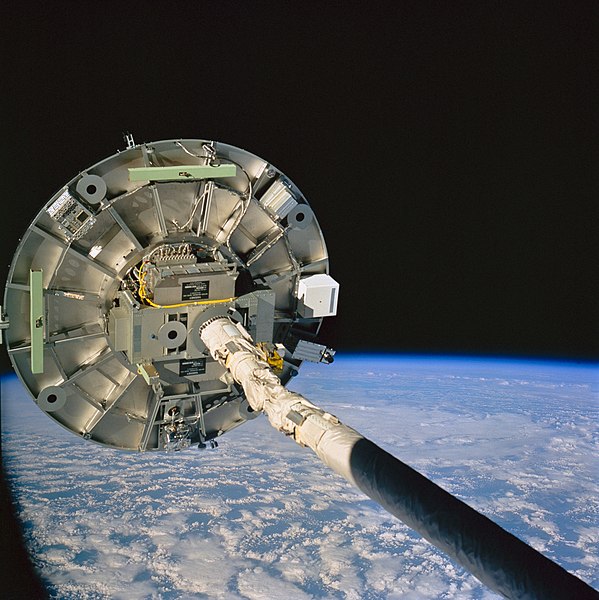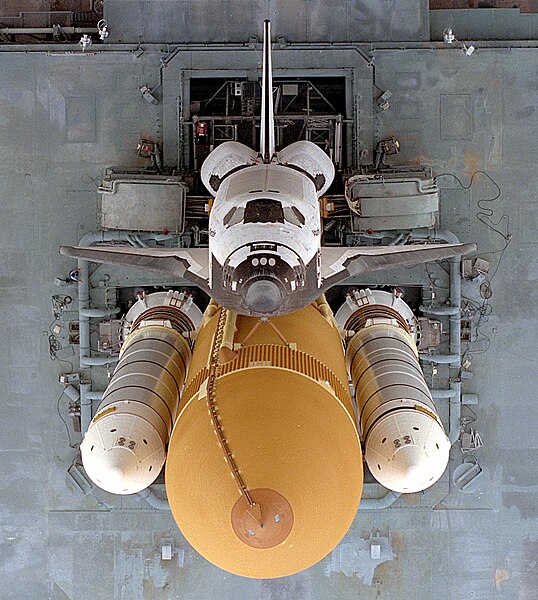STS-60 was the first mission of the U.S./Russian Shuttle-Mir Program, which carried Sergei K. Krikalev, the first Russian cosmonaut to fly aboard a Space Shuttle. The mission used NASA Space Shuttle Discovery, which lifted off from Launch Pad 39A on February 3, 1994, from Kennedy Space Center, Florida. The mission carried the Wake Shield Facility experiment and a SPACEHAB module, developed by SPACEHAB Inc., into orbit, and carried out a live bi-directional audio and downlink link-up with the cosmonauts aboard the Russian space station Mir.
The SPACEHAB-2 in Discovery's payload bay, as Canadarm grapples the Wake Shield Facility (WSF-1).
Clockwise from bottom left: Kenneth S. Reightler Jr., Franklin R. Chang-Díaz, Ronald M. Sega, Sergei K. Krikalev, N. Jan Davis, Charles F. Bolden Jr.Space Shuttle program← STS-61 (59)STS-62 (61) →
Launch of STS-60
The Wake Shield Facility grappled by the Canadarm.
The Shuttle–Mir program was a collaborative 11-mission space program between Russia and the United States that involved American Space Shuttles visiting the Russian space station Mir, Russian cosmonauts flying on the Shuttle, and an American astronaut flying aboard a Soyuz spacecraft to engage in long-duration expeditions aboard Mir.
Space Shuttle Atlantis docked to Mir on STS-71
The seven American astronauts who carried out long-duration Increments on Mir
The view of Mir from Space Shuttle Discovery in 1998 as it left the station during STS-91
An overhead view of Atlantis as it sits atop the Mobile Launcher Platform (MLP) before STS-79








